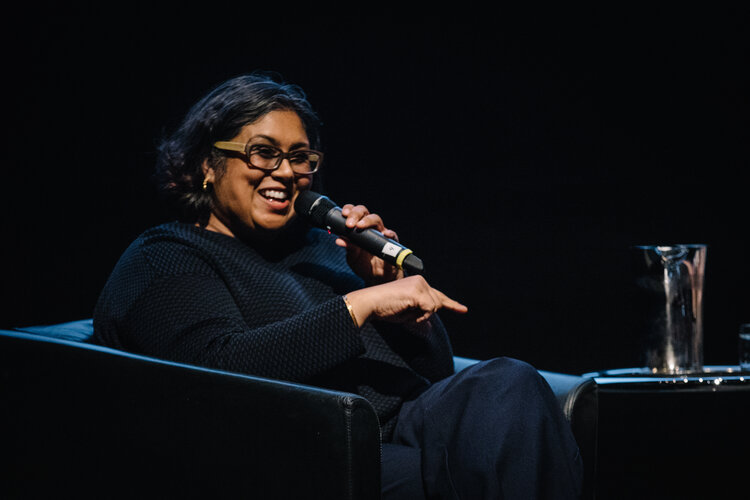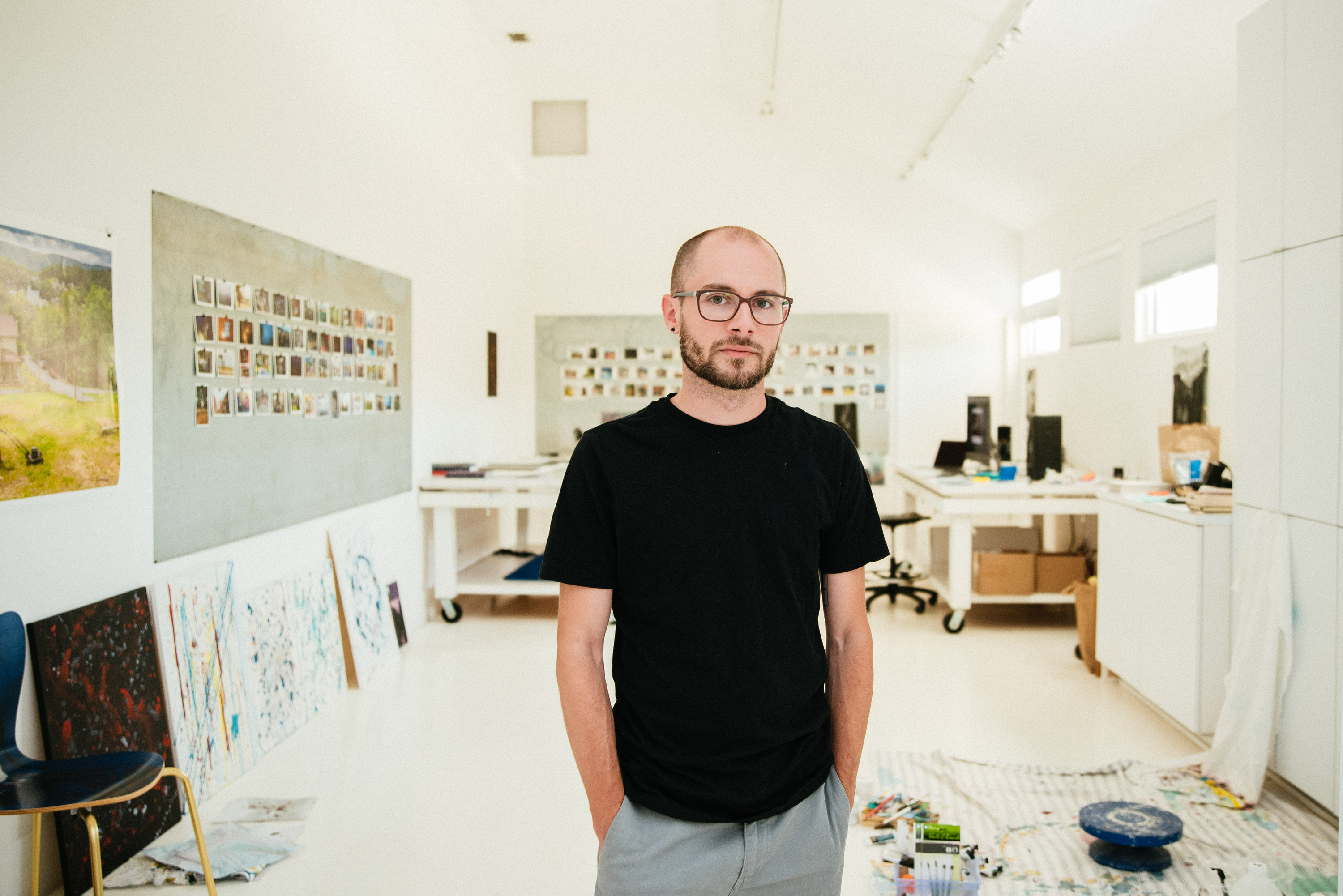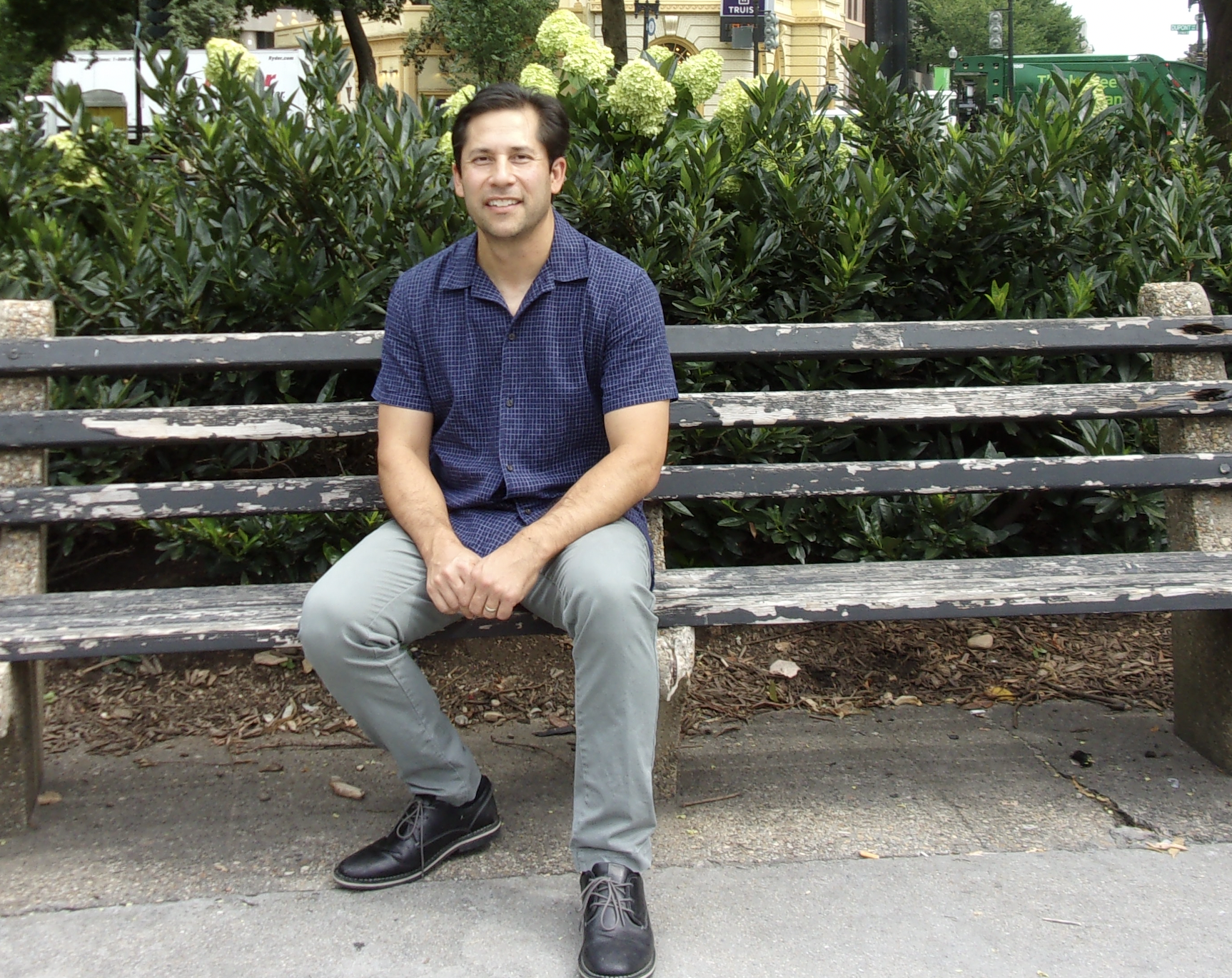By Greg Varner
Toby Mountain isn’t a typical Beatles fan. For one thing, he’s a Grammy Award-winning mastering engineer, giving him extra insight into the scope of their achievement. For another, he teaches George Washington University’s Recording the Beatles course, offered by the music program of the Corcoran School of the Arts and Design, housed in the Columbian College of Arts and Sciences.
Years ago, Mountain saw the Beatles perform live in concert on two different occasions. Later, he worked on recordings by Alison Krauss, David Bowie, Bob Marley and many other well-known artists.
Students take Mountain’s course on the Beatles for various reasons. Some, like first-year student Hannah Boyle, are already Beatles fans who say they jumped at the opportunity to deepen their appreciation; others, like Kendall Larade, also in her first year, say they didn’t know much about the lads from Liverpool and wanted to learn what makes the Beatles so special.
Another first-year student, Sean Tam, grew up listening to choral renditions of Beatles tunes by the Kennedy Choir, from a CD on regular rotation in his parents’ car. Now, when he hears the Beatles performing their own songs, his original perceptions are being adjusted.
“Sometimes, the first time I’d hear Beatles songs actually by the Beatles, it felt weird,” Tam said, “because that’s not the version I grew up listening to.” Learning about their music in this course, he added, has increased his appreciation for their artistry.
While the course is deepening her admiration for their work, Boyle said, she isn’t likely to change her overall opinion: “I’ve grown up listening to the Beatles,” she said, “and I’ve loved their music.”
A recent class discussion of “Norwegian Wood” held special interest for Larade, who said it’s one of her favorite Beatles tunes, though she wasn’t too familiar with their music before enrolling in this course.
“I never listened to the Beatles,” Larade said, “and neither did my parents, so I’ve always seen them as sort of an old, outdated 1960s group, but through this course, I know that the Beatles laid the foundation for a lot of modern music. I’m learning how experimental they were and how they really forged a path in the rock genre.”
The syllabus for Mountain’s course follows the fab foursome chronologically from their earliest albums to late classics such as “Sgt. Pepper’s Lonely Hearts Club Band” (1967), “The Beatles” (popularly known as the “White Album” of 1968) and “Abbey Road” (1969).
“I like the later stuff,” Mountain said. “I think it’s more interesting and intriguing. ‘A Day in the Life’ from ‘Sgt. Pepper’ is an amazing song. It’s almost operatic—it’s got these big, different sections, and as an innovation they dared to bring in an orchestra. And not only that—they asked the musicians to do pretty crazy things. For instance, they had two songs, originally: the first section by John Lennon (‘I read the news today, oh boy’) and a section Paul McCartney had written (‘Woke up, got out of bed, dragged a comb across my head’) and they had to get from that first part by Lennon to the McCartney part. And they figured the only way to do this is to do something really wacky, so they directed the orchestral players to start on their lowest note and just sort of go up as high as they could go in about 20 seconds.”
Another of Mountain’s favorite Beatles songs is “Back in the U.S.S.R.,” from the “White Album.” “You see them really becoming satirists in a way,” Mountain said, “satirizing the Soviet Union and at the same time imitating a famous American band, the Beach Boys.”
But it’s not just their later work that Mountain finds interesting. “Tomorrow Never Knows,” a song from the “Revolver” album of 1966, is “amazing and even revolutionary,” he said. “It’s probably one of the first pieces of looped music ever used, way before the hip-hop era. It’s got a looped drum pattern. The Beatles were fascinated by the tape machine.” This fascination, he added, led them to take full advantage of contemporaneous changes in recording technology.
In the 1960s, Toby Mountain saw the Beatles perform live twice; today, he's teaching a course on their work. (Greg Varner/GW Today)
“If you follow the chronology of how rock music evolved, it’s all because of the tape machine, and you go from one track to two tracks to four tracks to eight, then 16, and finally 24 tracks. The whole evolution of rock music depends upon that technology.”
It makes sense that Mountain would be sensitive to the technical aspects of musical recordings, given his other profession as a mastering engineer. Mastering, he explained, is the last creative step in the recording chain.
“People will send me all their mixes—multitrack recordings, probably done at very different times, sometimes months apart,” Mountain said. “My job is to take all those pieces of music, those tracks, and make them work as one piece, one album or one small collection of songs, so that the band or the artist sounds consistent.”
The artists always have final approval over his mastering work, he noted, adding that students are typically very interested in the technical side of how albums were recorded.
“It’s something they don’t know anything about,” he said. “The Beatles are really a template for the evolution not only of how the album became an art form in itself, but also how different procedures and techniques were enhanced and evolved during this period in the 1960s. I wanted this course to be not just about the Beatles or even just their music—I wanted it to be about recording and unlocking the mystery of how they created this great music.”
There are several courses like this in the GW music program, Mountain said. He also teaches a class on David Bowie. In addition, GW offers courses on hip-hop, punk rock, folk and other genres and styles, as well as modern composition and electronic music. Such courses help students make connections between the artistic and political and social dimensions of their lives, he said.
“The important thing about music at GW is that it’s really part of a liberal arts program,” Mountain said, “and the goal is to help students understand how their musical lives, whether they’re musicians or listeners, intersect with broader social and historical developments that they also learn about.”
Exploring ‘Rubber Soul’
During a recent class session, Mountain led students through highlights of “Rubber Soul” (1965), an album in which the Beatles entered a period of accelerating growth leading to their maturity as artists. Mountain characterized it as “their first serious excursion into a more sophisticated musical world,” adding that it “paved the way for a lot of the artists who followed them in popular music.” He described the technical innovations in the recording, such as the use of a fuzzbox to distort the guitar, as well as the increasing maturity of the songwriting and performance.
After giving a brief overview of the album, he led a discussion of the music and lyrics of several tracks, beginning with “Drive My Car.” The bass is a little more angular, he noted, and “It’s really filling the role of the lead guitar. This is something a little bit new in popular music at the time.” He also drew attention to the song’s jazzy piano before inviting students to ponder the deeper implications of the lyrics. The era’s typical gender roles are reversed, with the woman in charge; he also pointed to the song’s risqué implications, adding that McCartney said “Drive My Car” was a euphemism from blues music.
Moving on to a consideration of “Norwegian Wood,” Mountain said George Harrison’s choice to play sitar on the track was very unusual in Western pop at the time and quite influential—subsequently, the sitar was heard more frequently in British and American music. Mountain also pointed to the vocal enhancement in the chorus, sung in a parallel minor mode.
“How is this different from older Beatles songs,” he asked, “and is there anything about this subject that’s different?” When students said that the adult subject matter of the song was atypical in the context of the period’s popular songs, Mountain agreed: “They’re telling stories now, not just talking about boy meets girl.”
Commenting on the Baroque style of the instrumental keyboard section of “In My Life,” Mountain explained how the piano’s recording speed and playback was electronically manipulated to suggest a harpsichord. The falsetto vocal at the song’s end, he added, was becoming something of a Beatles trademark.
Touching on the differences that were emerging in the songwriting of McCartney and Lennon, though their songs were published with a dual credit, Mountain explained how the differences in their personalities were starting to come through.
“For the first half of their career, they were collaborating pretty much,” Mountain said. “They would sit down together and work songs out. By the time they become more mature, in the mid-60s, they’ve got their own lives. And they’re working on stuff on their own.”
If he had to choose one song to represent the Beatles, Mountain said one obvious candidate would be “All You Need is Love.”
“That song says it all,” he said, “in terms of their message to the world and to their fans.”






